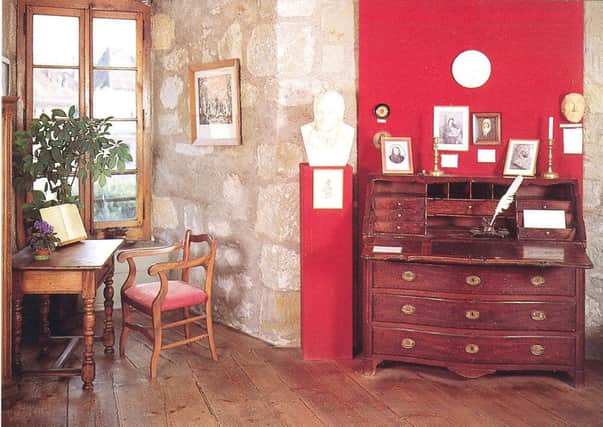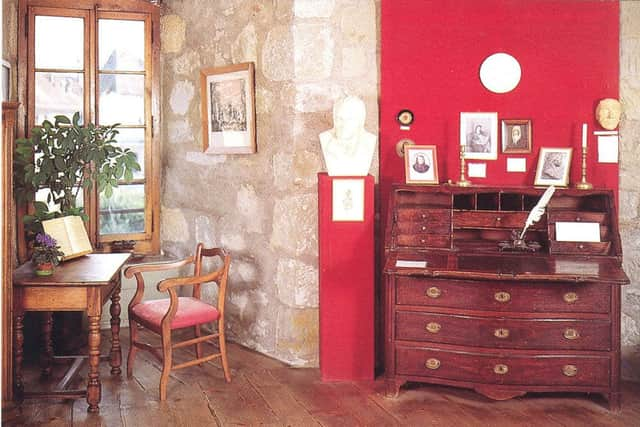How a Sussex village became linked to Switzerland


A FORTRESS may seem an unlikely setting for a school, but for 20 years the massive walls of the chateau at Yverdon-les-Bains, on the shores of Lake Neuchatel, were home to an institute set up by Pestalozzi in 1804 to educate poor children
At first only boys aged seven to 15 were taught. They came from the town, from Lausanne, from the German-speaking part of Switzerland and from Germany, France, Italy and Spain.
Advertisement
Hide AdAdvertisement
Hide AdUp to 150 boys at a time stayed at the castle for several years, often without seeing their parents, while Pestalozzi and others interested in his methods provided an education they might otherwise never have had.


Nor was it the conventional learning by rote, but an holistic approach to educate the whole person - head, heart and hands. Pestalozzi is reported to have said: “I wanted school to change and classes to be interesting.
“My dearest wish was that the children could choose a profession they were interested in, and be happy and useful in their adult life.”
As well as studying maths, languagues, music and art, the boys went on long walks in the surrounding countryside to learn about nature. At night they counted the stars, and sometimes they visited local craftsmen to see their skills at first hand.
Advertisement
Hide AdAdvertisement
Hide AdWith girls’ schooling badly neglected at the time, Pestalozzi created a second institute for them next to Yverdon town hall, opened in 1806, to provide similar opportunities where they got a similar education to the boys.
Their benefactor realised that children with disabilities also lacked opportunities to learn, and so in 1813 with his friend Johann Conrad Naef, from Zurich, he created Switzerland’s first institute for deaf and dumb children in Yverdon’s Rue de la Plaine.
Five years later, a school for the poor was opened in Clendy, a nearby suburb, so that Pestalozzi could train them to become teachers in their own villages.
His methods attracted observers from all over Europe and even America, and all were amazed to see youngsters of different languages, origins, characters, religion and ages, living happily together and respecting each other’s cultures.
Advertisement
Hide AdAdvertisement
Hide AdIt is this ethic that still obtains today at the Pestalozzi International Village in Sedlescombe, opened in 1959 to receive able children from Tibet, Thailand, Palestine, India, Nepal, Nigeria and Vietnam, some of them war refugees, who might otherwise have been denied schooling.
They attended local schools and learned practical skills, such as farming, carpentry and bricklaying, and many gained diplomas before returning to their homelands to work as doctors, teachers, engineers and traders.
Many countries have since improved their secondary education and so the emphasis has shifted to offering scholarships to academically bright but economically disadvantaged 16 to 19-year-olds to study for the International Baccalaureate diploma.
A spokesperson said: “We currently select students from Belize, Bhutan, India, Nepal, the Tibetan communities in exile, Uganda, Zambia and Zimbabwe. We are also conducting research and development in a number of other countries that meet our strict criteria, including Palestine and Indonesia.”
Advertisement
Hide AdAdvertisement
Hide AdSedlescombe’s students appoint their own house committees, prepare their own breakfasts and dine together in the campus’s Swiss Hall. They share each others’ national and religious festivals and traditions, and every individual’s birthday is celebrated.
Pestalozzi was born in Zurich on January 12, 1746. At 23, he married Anna Schulthess - who closely supported him in his educational endeavours - and in his early life tried to help abandoned children and beggars, both directly and through copious publications highlighting their plight.
Pestalozzi’s work in Yverdon came to an end in 1825 when, aged 79 and by then 10 years a widower, he returned to his rural roots at Birr in Aargau Canton where he died on February 17, 1827.
As history has shown, Pestalozzi’s name has since become known worldwide, and his dream of offering everyone the chance to learn and become independent has lived on.
Advertisement
Hide AdAdvertisement
Hide AdIn Yverdon town centre a statue of Pestalozzi created by Bernese carver Charles-Alfred Lanz has stood as a memorial to the man and his work since 1890. Fittingly, it is inscribed with a phrase that in many ways sums up his philosophy: “I lived like a beggar to teach beggars to live like men.”